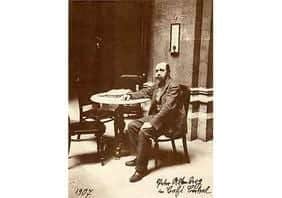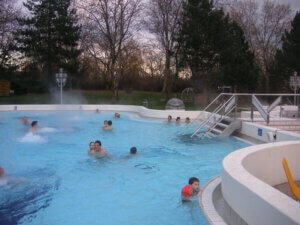Who were the founders of Viennese coffeehouse literature and from when do we speak of it? In which café did it all begin and where did which artists meet?
The beginnings of Viennese coffeehouse literature date back to 1890 and were founded in Café Griensteidl. It was the time of the “fin de siécle” and the decline of the Habsburg monarchy was looming. The end can be placed approximately in 1938.
Around the turn of the century was the so-called heyday of Viennese coffeehouse literature.
A poem by Peter Altenberg describes it quite aptly:
You have worries, be it this, be it that – to the coffee house!
She cannot, for some reason, however plausible, come to you – to the coffee house!
You have torn boots – coffee house!
You have 400 crowns salary and spend 500 – coffee house!
You are correctly thrifty and do not treat yourself to anything – coffee house!
You’re on the verge of suicide inside – coffee house!
You hate and despise people and yet you can’t miss them – coffee house!
You are not credited with anything anymore – coffee house!
Peter Altenberg (around 1910)
Famous coffeehouse literati included Peter Altenberg, Arthur Schnitzler, Karl Kraus, Friedrich Torberg, Felix Salten, Herrmann Bahr. The café served as a place of inspiration, for social studies, for literary works that were written entirely or at least partially in the café. There were about 600 coffee houses in Vienna around 1900.
It all began in Café Griensteidl, later moving to Café Central and Café Herrenhof. Café Museum was especially popular with painters and architects (Klimt, Kokoschka, Schiele, Loos, Wagner) Café Landtmann became Freud’s favorite café. Theodor Herzl, Siegfried Marcus, and Leon Trotsky were also frequent guests at the coffeehouse.
During the world wars, coffee houses led a shadowy existence. From the 1960s, Café Hawelka became the center of artistic creation.
Nowadays, Viennese coffee houses enjoy great popularity. Literature is revived through readings and performances.





